|
On the Number 10
| |||||||||||||||||||||||||||||||
|
10 in Mathematics
| |||||||||||||||||||||||||||||||
| 1) | The 5th even number = 2, 4, 6, 8, 10 | ||||||||||||||||||||||||||||||
| 2) | The 5th composite number = 4, 6, 8, 9, 10 | ||||||||||||||||||||||||||||||
| 3) |
The 4th triangular number =
1, 3, 6, 10 (Sum of the 1st four numbers = 1 + 2 + 3 + 4 = 10) | ||||||||||||||||||||||||||||||
| 4) |
The 3rd tetrahedral number =
1, 4, 10 (Sum of the 1st three triangular numbers = 1 + 3 + 6 = 10) | ||||||||||||||||||||||||||||||
| 5) |
The 4th 2-highly polygonal number
= 1, 6, 9, 10, 12, 15, 16, 21, 28 | ||||||||||||||||||||||||||||||
| 6) |
The 10th Harshad number = 10 (a positive integer which is divisible by the sum of its digits, i.e., 10/1 = 10) | ||||||||||||||||||||||||||||||
| 7) | Product of the 1st even & 3rd odd numbers = 2 x 5 = 10 | ||||||||||||||||||||||||||||||
| 8) | Product of the 1st & 3rd prime numbers = 2 x 5 = 10 | ||||||||||||||||||||||||||||||
| 9) | Product of the 3rd & 5th Fibonacci numbers = 2 x 5 = 10 | ||||||||||||||||||||||||||||||
| 10) | Sum of the 1st three prime numbers = 2 + 3 + 5 = 10 | ||||||||||||||||||||||||||||||
| 11) | Sum of the 3rd, 4th, 5th Fibonacci numbers = 2 + 3 + 5 = 10 | ||||||||||||||||||||||||||||||
| 12) | Sum of the 1st & 3rd square numbers = 12 + 32 = 1 + 9 = 10 | ||||||||||||||||||||||||||||||
| 13) | Sum of the 1st & 4th even numbers = 2 + 8 = 10 | ||||||||||||||||||||||||||||||
| 14) | Sum of the 2nd & 4th odd numbers = 3 + 7 = 10 | ||||||||||||||||||||||||||||||
| 15) | Sum of the 2nd & 3rd Mersenne numbers, (2n - 1): 3 + 7 = 10 | ||||||||||||||||||||||||||||||
| 16) | Sum of the 2nd & 3rd even numbers = 4 + 6 = 10 | ||||||||||||||||||||||||||||||
| 17) | Sum of the 3rd odd & 3rd prime numbers = 5 + 5 = 10 | ||||||||||||||||||||||||||||||
| 18) | Square of 10 = 102 = 100 | ||||||||||||||||||||||||||||||
| 19) | Cube of 10 = 103 = 1000 | ||||||||||||||||||||||||||||||
| 20) | Square root of 10 = 3.16227766 | ||||||||||||||||||||||||||||||
| 21) | Cube root of 10 = 2.15443469 | ||||||||||||||||||||||||||||||
| 22) | ln 10 = 2.302585093 (natural log to the base e) | ||||||||||||||||||||||||||||||
| 23) | log 10 = 1(logarithm to the base 10) | ||||||||||||||||||||||||||||||
| 24) |
Sin 10o = 0.173648177 Cos 10o = 0.984807753 Tan 10o = 0.17632698 | ||||||||||||||||||||||||||||||
| 25) |
1/10 expressed as a decimal = 0.1 | ||||||||||||||||||||||||||||||
| 26) |
Factorial 10 = 10! = 1 x 2 x 3 x 4 x 5 x 6 x 7 x 8 x 9 x 10 = 3,628,800 | ||||||||||||||||||||||||||||||
| 27) | 10th coupled exponential = 1010 = 10,000,000,000 (ten billion) | ||||||||||||||||||||||||||||||
| 28) | The 10th digit of pi = 5 (3.1415926535) | ||||||||||||||||||||||||||||||
| 29) | The 49th & 50th digits of pi = 10 | ||||||||||||||||||||||||||||||
| 30) | The 231st & 232nd digits of phi = 10 | ||||||||||||||||||||||||||||||
| 31) |
The 195th & 196th digits of e = 10 e = 2.7182818284 5904523536 0287471352 6624977572 4709369995 9574966967 6277240766 3035354759 4571382178 5251664274 2746639193 2003059921 8174135966 2904357290 0334295260 5956307381 3232862794 3490763233 8298807531 9525101901 (Note: The 99th-108th digits of e = 7427466391 is the first 10-digit prime in consecutive digits of e. This is the answer to the Google Billboard question that may lead to a job opportunity at Google.com, San Jose Mercury News, 7-10-2004) | ||||||||||||||||||||||||||||||
| 32) | 10 is the base of our decimal system. | ||||||||||||||||||||||||||||||
| 33) |
The binary number
0010 = 2; The binary number 1010 = (1x23) + (0x22) + (1x21) + (0x20) = 8 + 0 + 2 + 0 = 10 | ||||||||||||||||||||||||||||||
| 34) |
Binary number for 10 = 00001010 (Decimal & Binary Equivalence; Program for conversion) | ||||||||||||||||||||||||||||||
| 35) |
ASCII value for 10 = LF (Hexadecimal # & ASCII Code Chart) | ||||||||||||||||||||||||||||||
| 36) |
Hexadecimal number for 10 = 0A (Hexadecimal # & ASCII Code Chart) | ||||||||||||||||||||||||||||||
| 37) |
Octal number for 10 = 012 (Octal #, Hexadecimal #, & ASCII Code Chart) | ||||||||||||||||||||||||||||||
| 38) | The Greek-based numeric prefix deca- means 10. | ||||||||||||||||||||||||||||||
| 39) | The Latin-based numeric prefix deci- means 10. | ||||||||||||||||||||||||||||||
| 40) | The adjective "decennial" means "recurring every 10 years." | ||||||||||||||||||||||||||||||
| 41) |
The noun "decimo (10mo)"
means "a book with leaves printed on one tenth of the printer sheet". | ||||||||||||||||||||||||||||||
| 42) | The verb, adjective, adverb, and noun "decuple" means "multiply by 10". | ||||||||||||||||||||||||||||||
| 43) |
The adjective and noun
"denary"
means "10th in order or importance". The adjective "denary" means "having 10 parts". | ||||||||||||||||||||||||||||||
| 44) | X is the Roman numeral for 10. | ||||||||||||||||||||||||||||||
| 45) |
.jpg) Shí
is the Chinese word for 10, and resembles a cross. Shí
is the Chinese word for 10, and resembles a cross.
| ||||||||||||||||||||||||||||||
| 46) |
 is the
Babylonian number for 10.
is the
Babylonian number for 10.
| ||||||||||||||||||||||||||||||
| 47) |
 is the
Mayan number for 10.
is the
Mayan number for 10.
| ||||||||||||||||||||||||||||||
| 48) |
Deca- means 10 (Latin, Greek: deka) Decade is a period of 10 years. | ||||||||||||||||||||||||||||||
| 49) |
10 in different languages: Dutch: tien, French: dix, German: zehn, Hungarian: tiz, Italian: dieci, Spanish: diez, Swahili: kuma, Swedish: tio | ||||||||||||||||||||||||||||||
|
10 in Science
| |||||||||||||||||||||||||||||||
| 54) |
A Decagon
is a polygon with 10 angles and 10 sides. The interior angle of a decagon = 144o. | ||||||||||||||||||||||||||||||
| 55) |
Number of faces & edges in a tetrahedron = 4 + 6 = 10 Number of edges & vertices in a tetrahedron = 6 + 4 = 10 (Platonic solids) | ||||||||||||||||||||||||||||||
| 56) |
Atomic Number of
Neon (Ne) = 10 (10 protons & 10 electrons). Neon is a very inert element and forms an unstable hydrate. In a vacuum discharge tube, neon glows reddish orange. Of all the rare gases, the discharge of neon is the most intense at ordinary voltages and currents. It is present in the atmosphere as 1 part in 65000. | ||||||||||||||||||||||||||||||
| 57) |
Number of amino acids in the
hypothalamic hormone,
Gonadotropin-releasing factor = 10. It acts on gonadotrope to release luteinizing hormone & follicle-stimulating hormone. Sequence: (human) pyroGlu-His-Trp-Ser-Tyr-Gly-Leu-Arg-Pro-Gly | ||||||||||||||||||||||||||||||
| 58) |
The 10th amino acid in the 141-residue alpha-chain of Human Hemoglobin is Valine (V) The 10th amino acid in the 146-residue beta-chain of Human Hemoglobin is Alanine (A) Single-Letter Amino Acid Code Alpha-chain sequence of human hemoglobin: VLSPADKTNVKAAWGKVGAHAGEYGAEALERMFLSFPTTKTYFPHFDLSH GSAQVKGHGKKVADALTNAVAHVDDMPNALSALSDLHAHKLRVDPVNFKL LSHCLLVTLAAHLPAEFTPAVHASLDKFLASVSTVLTSKYR Beta-chain sequence of human hemoglobin: VHLTPEEKSAVTALWGKVNVDEVGGEALGRLLVVYPWTQRFFESFGDLST PDAVMGNPKVKAHGKKVLGAFSDGLAHLDNLKGTFATLSELHCDKLHVDP ENFRLLGNVLVCVLAHHFGKEFTPPVQAAYQKVVAGVANALAHKYH | ||||||||||||||||||||||||||||||
| 59) | Number of fingers in primates = 10 | ||||||||||||||||||||||||||||||
| 60) | Number of toes in the human feet = 10 | ||||||||||||||||||||||||||||||
| 61) |
 The Passion Flower
The Passion Flower(Passiflora) has 10 petals. In 1609 in Rome, Emmanuel de Villegas, a Mexican friar, first reported this flower with sketches to Jacomo Bosio, who associated it with Christ's crucifixion (hence Passion Flower): The outer ten petals: the 10 disciples at the Crucifixion. 72 radial filaments within the petals: the crown of thorns. The spiraled tendrils: the whip of Christ's scourging. The 5 stamens represents Christ's five wounds. The top 3 stigma represent the three nails. ( Passion flower film; Passion flower art) | ||||||||||||||||||||||||||||||
|
10 in Mythology & History
| |||||||||||||||||||||||||||||||
| 70) | Tin wedding anniversary celebrates 10 years of marriage | ||||||||||||||||||||||||||||||
| 71) |
The 10th day of the year =
January 10 (Born on January 10, 1910: Galina Ulanova, Bolshoi Ballerina, NY Times Obituary) | ||||||||||||||||||||||||||||||
| 72) | J is the 10th letter of the English alphabet . | ||||||||||||||||||||||||||||||
| 73) |  Yod
is the 10th letter (and smallest)
Yod
is the 10th letter (and smallest)of the Hebrew alphabet, and means "open hand". | ||||||||||||||||||||||||||||||
| 74) |
Kappa (K)
is the 10th letter of the
Greek alphabet, meaning purity, with numeric value of 20, | ||||||||||||||||||||||||||||||
| 75) |
.jpg) Ray (Raa')
is the 10th letter of the
Arabic alphabet,
Ray (Raa')
is the 10th letter of the
Arabic alphabet,and looks like a giant comma (,). | ||||||||||||||||||||||||||||||
| 76) |
"The number ten signifies perfection; for to the number seven which embraces all created things, is added the trinity of the Creator." Augustine of Hippo (354-430), Manichaean Heresy (392), p. 107 | ||||||||||||||||||||||||||||||
| 77) |
10 is considered a perfect number because it's the summit of the nine single digit numbers, as well as the lowest of the double digit numbers. It is a combination of 1 & 0— the binary basis of computer technology. Philosophically it is a symbol of the Manifest & Unmanifest, or Oneness & Emptiness. | ||||||||||||||||||||||||||||||
| 78) |
In the song The Twelve Days of Christmas, "on the 10th day of Christmas, my true love gave to me 10 lords a-leaping" | ||||||||||||||||||||||||||||||
| 79) |
 10th President
10th Presidentof the United States is John Tyler (1790-1862) who served (1841-1845). Tyler was on the 10¢ stamp (Scott# 815) issued on Sept. 14, 1938 in the Presidential Series. | ||||||||||||||||||||||||||||||
| 80) | 10th State to enter the Union is Virginia (June 25, 1788) | ||||||||||||||||||||||||||||||
| 81) |
At Age 10: Wolfgang A. Mozart (1756-1791) stays briefly in Lausanne (1766) and a local journal says "In young Mozart, the sensitiveness and the precision of his ear are so great that discordant, shrill, or too loud notes bring tears to his eyes." Claude Debussy (1862-1918) enters the Paris Conservatoire (Oct. 22, 1872) after the competitive entry examination. His home life is poor and insecure— his father is a drifter, and his mother has an aversion to children, so that Debussy is brought up by an aunt. He does well at the Conservatoire, and begins composing in his late teens. He writes Claire de Lune at age 27. Percy Bysshe Shelley (1792-1822) is sent to boarding school (1802), and for the first time he plays with other boys, as his family consists of four younger sisters. Though pushed around at school, he has a mystical revelation at 11, that in his life he should choose only the pure and the lovely. John Betjeman (1906-1984), British poet, shows his poems to his schoolteacher (1916), but the latter offers no encouragement. The teacher is T. S. Eliot. In 1969, he was knighted, and was made England's Poet Laureate in 1972. Charlie Chaplin (1889-1977), British film actor: His mother is taken away to a mental institution (1899), and Chaplin returns home to a bare room which contains "a half-filled packet of tea, 3 halfpence, some keys, & several pawn tickets." Shirley Temple (born April 23, 1928), American film actress and diplomat, stars in 3 films: Rebecca of Sunnybrook Farm, Little Miss Broadway, & Just Around the Corner (1938). David Livingstone (1813-1873), Scottish doctor and missionary, leaves school, and is sent to work in a cotton factory, as a "piercer" (1823). With his first earnings, he buys Ruddiman's Rudiments of Latin. He explored Africa & discovered Victoria Falls (1854). Arthur Ashe (1943-1993), American tennis player, is invited to the home of Robert Walter Johnson, a black M.D. who organizes tennis camps for promising blacks. At 14, Ashe wins in his age group at the ATA National Championship. At 25, he wins the U.S. Open (1968). At 32, Ashe defeats Jimmy Connors & wins the singles title at Wimbledon (1975) [Sources: World Almanac Book of Who (1980); Jeremy Baker, Tolstoy's Bicycle (1982); Web Links] | ||||||||||||||||||||||||||||||
| 82) |
.jpg) Stanford Bronze Plaque 10
Stanford Bronze Plaque 10is on the ground 14 yards to the right of Stanford University's Memorial Church. It is dedicated to the Class of 1910. The first graduating class at Stanford was 1892. In 1980, Stanford Provost Don Kennedy strolled around the Inner Quad and calculated that it would take 512 years for the bronze class plaques embedded in the walkways to circle the entire area ending with the Class of 2403. (Photo by Peter Y. Chou, April 2005) | ||||||||||||||||||||||||||||||
|
10 in Sports and Games
| |||||||||||||||||||||||||||||||
| 99) |
 In Bowling, 10 pins
In Bowling, 10 pinsare arranged in a triangular pattern. Candlepin Bowling | ||||||||||||||||||||||||||||||
| 100) |
Decathlon is a 10-event athletic contest: (100-meter, 400-meter, and 1500-meter runs, 110-meter high hurdles, javelin & discus throws, shot put, pole vault, high jump, and long jump) | ||||||||||||||||||||||||||||||
| 101) |
In the Olympics, the
highest score for a gymnastic event is 10 (Nadia Comaneci 1976, Mary Lou Retton 1984) | ||||||||||||||||||||||||||||||
| 102) |
Baseball's
10th All-Star Game was played at the Polo Grounds, New York, NY, on july 6, 1942. The American League beat the National League 3-1. Lou Boudreau's homer, followed by Henrich's double and York's homer in the first, carried the American League to an easy victory. Owen's pinch-hit homer in the 8th spoiled the shutout. Total Baseball, 4th Ed., Viking, NY (1995), p. 258 (The Baseball Encyclopedia, 8th Edition, Macmillan, NY, 1990, p. 2765) | ||||||||||||||||||||||||||||||
| 103) |
Baseball's
10th World Series (1913): Philadelphia Athletics defeats New York Giants 4-1 Total Baseball, 4th Ed., Viking, NY (1995), p. 307 (The Baseball Encyclopedia, 8th Edition, Macmillan, NY, 1990, p. 2640) | ||||||||||||||||||||||||||||||
| 160) |
10th Wimbledon Men's Tennis: Willie Renshaw beats Herbert Lawford (6-0, 5-7, 6-3, 6-4) in 1886. | ||||||||||||||||||||||||||||||
| 161) |
10th Wimbledon Women's Tennis: Lottie Dod beats B. Bingley Hillyard (6-8, 6-1, 6-4) in 1893. | ||||||||||||||||||||||||||||||
| 162) |
10th Kentucky Derby
was won by Buchanan
in 2:40 with Jockey Isaac Murphy aboard (May 16, 1884). | ||||||||||||||||||||||||||||||
| 163) |
10th Preakness Stakes
was won by Vanguard
in 2:44 with Jockey T. Costello aboard (May 27, 1882). | ||||||||||||||||||||||||||||||
| 164) |
10th Belmont Stakes
was won by Algerine
in 2:40 with Jockey William Donohue aboard (June 10, 1876). | ||||||||||||||||||||||||||||||
| 165) |
10th U.S. Golf Open:
William Anderson shoots a 303 at Glenview Club, Illinois (July 9, 1904) | ||||||||||||||||||||||||||||||
|
10 in Postage Stamps, Coins, & Collectibles
| |||||||||||||||||||||||||||||||
| 175) |
|
||||||||||||||||||||||||||||||
| 176) |
 U.S. currency:
U.S. currency:$10 bill: Alexander Hamilton (1755-1804), First Secretary of the Treasury (1789-1795) | ||||||||||||||||||||||||||||||
| 177) |
| ||||||||||||||||||||||||||||||
| 178) |
| ||||||||||||||||||||||||||||||
| 179) |
| ||||||||||||||||||||||||||||||
| 179) |
| ||||||||||||||||||||||||||||||
| 180) |
| ||||||||||||||||||||||||||||||
| 181) | Postage Stamps with Denominations of 10 (Scott Catalogue # cited) Note: Stamps were downloaded from the web or scanned and resized in same proportion as originals. Some stamps were retouched in Adobe Photoshop for brightness & contrast, centering or perforations.
| ||||||||||||||||||||||||||||||
|
10 in Books & Quotes
| |||||||||||||||||||||||||||||||
| 185) |
Graham Greene's The Tenth Man is a short novel written in 1944 when he was under a two-year contract to MGM. It was forgotten in the MGM's archives until 1983. It's the story of 30 Frenchmen in a German prison camp and every 10th man was to be shot. The prisoners draw lots from 30 pieces of paper, three of which had a cross drawn on it, and folded each piece and placed them in a shoe. Louis Chavel, a rich lawyer draws the "death slip" and offers all his worldly possessions to anyone who will take his place. One, for the sake of his family agrees. Later, when Chavel was released, he visits anonymously the family who possess his money, he himself now with nothing but his life. — Graham Greene (1904-1991), The Tenth Man The Bodley Head & Anthony Blond, London, 1985, pp. 11, 47-48 | ||||||||||||||||||||||||||||||
| 186) |
The Tenth Victim (1966) is a novelization by Robert Sheckley (USA), based on a script by Tonina Guerra and others for the Italian-made film of the same title (1965 directed by Elio Petri), which in turn was based on Sheckey's short soty "Seventh Victim". Humorous action-adventure stuff set in a future society of legalized death-duels, a world of declared "hunters" and "victims". (David Pringle, The Ultimate Guide to Science Fiction, 2nd Edition, Scolar Press, Aldershot, UK, 1990, p. 366-367 | ||||||||||||||||||||||||||||||
| 187) |
.jpg) Volume 10 of
Time Magazine
(1st issue: March 3, 1923)
Volume 10 of
Time Magazine
(1st issue: March 3, 1923)runs from July 4, 1927, X, No. 1 (Cover: Giuseppe Mario Bellanca) to December 26, 1927, X, No. 26 (Cover: Prime Minister Stanley Baldwin) Geraldine Farrar on Time cover, Vol. X, No. 23 (Dec. 5, 1927) Knute Rockne on Time cover, Vol. X, No. 19 (Nov. 7, 1927) William Randolph Hearst on Time cover, Vol. X, No. 7 (Aug. 15, 1927) | ||||||||||||||||||||||||||||||
| 188) |
Volume 10 of
Life Magazine
(1st issue: Nov. 23, 1936) runs from Jan. 6, 1941, X, No. 1 (Cover: Katherine Hepburn) to June 30, 1950, X, No. 26 (Cover: Madame Chiang Kai-shek) Harvard University on Life cover, Vol. X, No. 18 (May 5, 1941) | ||||||||||||||||||||||||||||||
|
10 in Art, Music, Film
| |||||||||||||||||||||||||||||||
|
10 in the Bible
| |||||||||||||||||||||||||||||||
| 250) |
10th word of the King James Version of
Genesis = earth "In the beginning God created the heaven and the earth" | ||||||||||||||||||||||||||||||
| 251) |
In the 10th Psalm, King David asks God to punish the wicked: Why do You stand afar off, O Lord? Why do You hide in times of trouble? The wicked in his pride persecutes the poor; let them be caught in the plots which they have devised. Arise, O Lord! O God, lift up Your hand! Do not forget the humble. Psalms 10.1-2, 12 | ||||||||||||||||||||||||||||||
| 252) |
King David sang praises to the Lord "upon an instrument of 10 strings": "Upon an instrument of ten strings, and upon the psaltery; upon the harp with a solemn sound." (Psalms, 92.3) "I will sing a new song unto thee, O God: upon a psaltery and an instrument of ten strings will I sing praises unto thee." (Psalms, 144.7) | ||||||||||||||||||||||||||||||
| 253) |
Moses received the 10 Commandments from God after 40 days & nights on Mt. Sinai. (Exodus 20.3-17) | ||||||||||||||||||||||||||||||
| 254) |
Noah waited 10 months for the water to recede after the Flood. "And the waters decreased continually until the tenth month: in the tenth month, on the first day of the month, were the tops of the mountains seen." (Genesis 8.5) | ||||||||||||||||||||||||||||||
| 255) | Number of chapters in the Ezra (Old Testament)= 10 | ||||||||||||||||||||||||||||||
| 256) |
Number of chapters in the
Esther (Old Testament)= 10 ("seeking the wealth of his people, and speaking peace to all his seed." Esther X.3) | ||||||||||||||||||||||||||||||
| 257) |
10th Book of Enoch Archangel Uriel warns Noah about Flood:
“a deluge is about to come upon the whole earth, and will destroy all that is on it. Escape so that your seed may be preserved for all the generations of the world... The works of righteousness and truth shall be planted in truth and joy for evermore. And then shall all the righteous escape, and shall live till they beget thousands of children, and all the days of their youth and their old age shall they complete in peace.” — Book of Enoch X.2-3, 16-17 (circa 105 B.C.-64 B.C.) | ||||||||||||||||||||||||||||||
| 258) |
Christ's parable of the 10 virgins (5 wise & 5 foolish) in Matthew 25.1-13 symbolizes our 5 inner & outer senses. | ||||||||||||||||||||||||||||||
| 259) |
Christ healed 10 lepers in a village, but only one turned back to thank him and with a loud voice glorified God. (Luke 17.12) | ||||||||||||||||||||||||||||||
| 260) |
Chapter 10 of Mohammed's
Holy Koran is titled "Jonah" Alif Lam Ra. These are the verses of the wise Book. He it is Who made the sun a shining brightness and the moon a light, and ordained for it mansions that you might know the computation of years and the reckoning. Their cry in it shall be: Glory to Thee, O Allah! and their greeting in it shall be: Peace; and the lastof their cry shall be: Praise tbe to Allah, the Lord of the worlds. And Allah invites to the abode of peace and guides whom He pleases into the right path. Mohammed, Holy Koran 10.1, 10.5, 10.10, 10.25 (7th century AD) (translated from by M.H. Shakir, Koran: Jonah, 1983) | ||||||||||||||||||||||||||||||
| 261) |
10th hexagram of the I Ching: Lü / Treading (Conduct)
| ||||||||||||||||||||||||||||||
| 262) |
Lao Tzu,
Tao Te Ching, Verse 10:
Can you grasp your soul and not let it go can you let your breath be as soft as a babe can you polish your mind mirror free of dust can you serve and govern without effort can you be the female at heaven's gate can you illumine the world with no-mind bring forth life and nourish them bring forth life and possess them not possess them and yet control them not such is called the mysterious virtue. (revised translations by D.C. Lau, 1963 & Red Pine, 1996) | ||||||||||||||||||||||||||||||
| 263) |
The Pythagoreans considered 10 as the perfect number since it is the sum of the tetraktys: 1 + 2 + 3 + 4 = 10. It contained all the geometric forms, being the sum of 1 (point), 2 (line), 3 (plane), and 4 (solid). Pythagoras regarded 10 as "the nature of number, because all men count up to 10, and when they reach it, revert again to unity." This reversion may be conceived as the revolution of a wheel. (F.M. Cornford, From Religion to Philosophy (1957) p. 208) |
Tetraktys
o o o o o o o o o o 1 + 2 + 3 + 4 = 10 | |||||||||||||||||||||||||||||
| 264) |
| ||||||||||||||||||||||||||||||
| 265) |
Chapter 10 in the
Bhagavad Gita (Krishna reveals to Arjuna his divine glory): Hear again mighty Arjuna, hear the glory of my Word again. I speak for thy good, because your heart finds joy in me. To those who are ever in harmony, and who worship me with love, I give the Yoga of vision and with this they come to me. Bhagavad Gita 10.1, 10.10 (circa 400 BC) (translated by Juan Mascaró, Penguin, 1962, pp. 84-85) | ||||||||||||||||||||||||||||||
| 266) |
10th Discourse of Valmiki's
Yoga Vasishtha: True worship consists in inward meditation alone, and in no outer form of worship; therefore, apply your mind to the adoration of the universal Spirit by meditating within yourself Valmiki (c. 750 AD), Yoga Vasishtha, 10.11 The World Within the Mind (4th edition) (translated by Hari Prasad Shastri, Shanti Sadan, London, 1969, p. 56) | ||||||||||||||||||||||||||||||
| 267) |
Section 10
of Hui Hai's Zen Teaching on Sudden Illumination: Q: When you said that wisdom is the function, what did you mean by wisdom? A: The knowledge that by realizing the voidness of all opposites, deliverance is assured and that, without this realization, you will never gain deliverance. This is what we call 'wisdom' or 'knowing wrong from right'. Another name for it is 'knowing the function of the substance' Concerning the unreality of opposites, it is the wisdom inherent in the 'substance' which makes it known that to realize their voidness means liberation and that there can be no more doubt about it. This is what we mean by 'function'. In speaking thus of the unreality of opposites, we refer to the nonexistence of relativities such as 'is' and 'is not', 'good' and 'evil', 'love' and 'aversion', and so on. — Hui Hai (circa 788 A.D.), Zen Teaching on Sudden Illumination, Section 10 (translated by John Blofeld, Rider & Co., London, 1962) | ||||||||||||||||||||||||||||||
| 268) |  Section 10
of Huang Po's
Section 10
of Huang Po'sZen Teaching on the Transmission of Mind: It is by preventing the rise of conceptual thought that you will realize Bodhi [wisdom], and, when you do you will just be realizing the Buddha [Awakened One] who has always existed in your own Mind!... Therefore the Buddha said: "I truly attained nothing from complete, unexcelled Enlightenment." — Huang Po (died 850 A.D.), Zen Teaching on the Transmission of Mind, The Chün Chou Record, Section 10 (translated by John Blofeld, Rider & Co., London, 1958, pp. 37-38) | ||||||||||||||||||||||||||||||
| 269) |
Section 10 of Rinzai's Lin-chi Lu: At the evening's question period th master told his monks: "Sometimes I snatch away the man but not the environment; sometimes I snatch away the environment but not the man. Sometimes I snatch away both man and environment; sometimes I snatch away neither man nor environment." A monk asked: "How do you snatch away the man but not the environment?" The master said: "Warm sunshine covers the earth with a carpet of brocade. The hair of the child is white like silken thrread." The monk asked: "How do you snatch away the environment but not the man?" The master said: "As the king's command reaches everywhere, the general at the frontier ceases to fight." The monk asked: "How do you snatch away both man and environment?" The master said: "The provinces of Hei and Fu are cut off entirely, each alone in its own place." The monk asked: "How do you neither snatch man nor environment?" The master said: "When the king ascends the jewel-palace, the peasants in the fields burst into song." Rinzai Gigen (died Jan. 10, 866 A.D.), The Zen Teaching of Rinzai, Section 10 (translated from the Chinese by Irmgard Schloegl) Shambhala, Berkeley, 1976, p. 19 | ||||||||||||||||||||||||||||||
| 270) |
Chou Tun-Yi (1017-1073),
Penetrating Book of Changes, Chapter 10: The Will to Learn “The sage aspires to become Heaven, the worthy aspires to become a sage. Yen Yüan did not transfer his anger; he did not repeat a mistake, and for three months his mind would be full of benevolence. If one learns what Yen Yüan learned, he will become a sage if he reaches the highest degree.” | ||||||||||||||||||||||||||||||
| 271) |
Kakuan's 10 Oxherd Drawings
depict the process of Zen enlightenment. The 10th Drawing shows the sage in the market place, where the enlightened one is not in a cave enjoying his bliss, but sharing his wisdom with everyone in everyday life. | ||||||||||||||||||||||||||||||
| 272) |
The 10 Sephiroth of the Kabbala
are the 10 spheres of light from the Tree of Life:
| ||||||||||||||||||||||||||||||
| 273) |
Canto 10 of Dante's Paradiso: (Ascent to the Fourth Heaven, the Sphere of the Sun):
( Allen Mandelbaum translation, University of California Press, Berkeley, 1984, pp. 86-87) | ||||||||||||||||||||||||||||||
| 274) |
Verse 10 of
Drg-Drsya-Viveka ("Seer-Seen Discernment")
by Bharati Tirtha (c. 1328-1380): “ In the state of deep sleep, when the thought of ego disappears the body also becomes unconscious. The state in which there is the half manifestation of the ego is called the dream state, and the full manifestation of the ego is the state of waking.” (translated by Swami Nikhilananda, Sri Ramakrishna Ashrama, Mysore, 1964, p. 13) | ||||||||||||||||||||||||||||||
| 275) |
10th Walk of
Reveries of the Solitary Walker by Jean-Jacques Rousseau (1712-1778): “ The taste for solitude and contemplation grew up in my heart along with the expansive and tender feelings which are best able to nourish it. Noise and turmoil constrain and quench them, peace and quiet revive and intensify them. I need tranquillity if I am to love.” (translated by Peter France, Penguin Books, NY, 1979, p. 154) | ||||||||||||||||||||||||||||||
| 276) |
Hate & Love in 10th Sonnet of William Shakespeare: For shame! deny that thou bear'st love to any, Who for thy self art so unprovident. Grant, if thou wilt, thou art beloved of many, But that thou none lov'st is most evident: For thou art so possessed with murderous hate, That 'gainst thy self thou stick'st not to conspire, Seeking that beauteous roof to ruinate Which to repair should be thy chief desire. O! change thy thought, that I may change my mind: Shall hate be fairer lodged than gentle love? Be, as thy presence is, gracious and kind, Or to thyself at least kind-hearted prove: Make thee another self for love of me, That beauty still may live in thine or thee. William Shakespeare (1564-1616), Sonnets X, Commentary | ||||||||||||||||||||||||||||||
| 277) |
10th Poem of Emily Dickinson:
| ||||||||||||||||||||||||||||||
| 278) |
Verse 10 in Jack Kerouac's Sutra, Scripture of the Golden Eternity (1960): This world is the movie of what everything is, it is one movie, made of the same stuff throughout, belonging to nobody, which is what everything is. Jack Kerouac (1922-1969) The Scripture of the Golden Eternity Totem/Corinth Book, NY, 1970, p. 21 | ||||||||||||||||||||||||||||||
| 279) |
Chapter 10 of Franklin Merell-Wolff's
Pathways through to Space (1936): is titled "Seek Me First" The joy is not the end-in-itself to be sought. Seek Me first, and then My Knowledge and My Joy will also be thine. Seek Me for My own sake and not for any ulterior motive. I and I alone am the worthy end of all endeavor. So lay down all for Me, and My Wealth will be thy wealth, My Power thy power, My Joy thy joy, My Wisdom thy wisdom. This universe is but a part of My Treasure, and it, with vastly greater Riches, shall be the portion of the Inheritance of all those who come to Me. Long have ye lingered in the desert of Ignorance. I desire not thy continued suffering. Come unto Me. The Way is not so hard. Franklin Merrell-Wolff (1887-1985) Pathways through to Space Chapter X: "How to Understand Mystic Writings" (2nd Edition, Julian Press, NY, 1973, p. 24) | ||||||||||||||||||||||||||||||
| 280) |
Aphorism 10 of
Franklin Merrell-Wolff's
Consciousness Without an Object (1973):
| ||||||||||||||||||||||||||||||
| 281) |
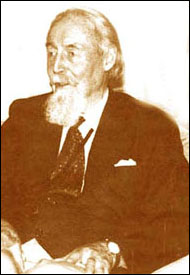 Chapter 10 of Wei Wu Wei's Ask the Awakened (1963) is titled "Silence, 2":
Chapter 10 of Wei Wu Wei's Ask the Awakened (1963) is titled "Silence, 2":Silence, regarded metaphysically, is considerably different from conventional silence, dualistically defined, silence as one element in a comparison of opposites, silence as the opposite and complement of noise. The silence which the Maharshi [Ramana] states is more powerful than speech, a more potent medium of instruction than words, the silence in which, and by which, occurs the transmission of mind via mind in which the ultimate doctrine of the Buddha was handed down from patriarch to patriarch according to the Ch'an Masters, is rather the background of the time-illusion, the interval between thoughts that is normally imperceptible to divided mind, of infinitesimal duration, but which is in itself intemporal, of no, or of infinite duration. If we can seize it, so we are told, and hold it, the mind stays open, and we are awake at last. What, then, is it— this metaphysical silence? Clearly it is the 'Buddha-mind' of Ch'an, the 'Witness' of Vedanta, the 'Father' of Christianity, i.e., whole-mind. The mechanism of dualism seems to be that of the escapement of a clock, which is also an instrument for recording time. One half momentarily stops the flow of time, and then the other, tic-toc, tic-toc. so does each half of split-mind, tic-toc, tic-toc, and the interval between each tick is pure movement, the background, the intemporal reality which, measured by each alternative tick, becomes time as we know it. And the tic-toc, the alternative stopage, is the comparison of opposites, the activity of split-mind, which we know as thought and mentation. We can now see why every one of the awakened tells us ad nauseam that all we need to do is to arrest the movement of thought in order to know whole-mind and find ourselves awake. It explains also why wu or satori is always precipitated by a sudden sound, anything from a clap of thunder to the snapping of a twig, or, indeed, any other sensory perception whatever. Such perception momentarily arrests the eternal tic-toc of thought and, the subject being ripe, whole-mind takes possession and is no longer split. That the awakened continue to know divided mind, in communicating with those who remain identified, is evident, but for them that condition is the abnormal, and the state of whole-mind the normal, instead of the contrary as with the rest of us. But it is surely an error to suppose that we do not know whole-mind in our daily life— for the the consciousness that is aware of our having thought is certainly that, a consciousness that is ever awake, is always present, and that alone is 'real'. Wei Wu Wei (1895-1986), Ask the Awakened (1963), pp. 21-22 | ||||||||||||||||||||||||||||||
| 282) |
Wei Wu Wei's The Tenth Man
is a Buddhist metaphysical book by an enlightened Irish sage. It contains 100 short contemplative pieces to arouse the reader to cosmic awakening. In Chapter 81, he tells The 'Tenth Man' Story how ten monks went on a pilgrimage and one became lost while crossing a river in flood. (complete story) Wei Wu Wei (1895-1986), The Tenth Man: The Great Joke Which Made Lazarus Laugh Hong Kong University Press, 1966, pp. 178-179 (Archives) | ||||||||||||||||||||||||||||||
| 283) |
| ||||||||||||||||||||||||||||||
| 290) |
Numerology: words whose letters add up to 10
DNA: 4 + 5 + 1 = 10 DO: 4 + 6 = 10 IS: 9 + 1 = 10 JAPA: 1 + 1 + 7 + 1 = 10 LAMB: 3 + 1 + 4 + 2 = 10 LAO: 3 + 1 + 6 = 10 MAN: 4 + 1 + 5 = 10 OAKS: 6 + 1 + 2 + 1 = 10 OM: 6 + 4 = 10 PAT: 7 + 1 + 2 = 10 RA: 9 + 1 = 10 SKY: 1 + 2 + 7 = 10 TAG: 2 + 1 + 7 = 10 UP: 3 + 7 = 10 WE: 5 + 5 = 10
| ||||||||||||||||||||||||||||||
| Top of Page | Numbers | Dates | A-Z Portals | Art & Spirit | Books | Enlightenment | Poetry | Home |
![]()
| © Peter Y. Chou, WisdomPortal.com P.O. Box 390707, Mountain View, CA 94039 email: peter@wisdomportal.com (6-11-2005) |
 |
.gif)
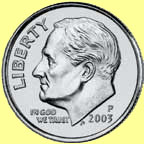
.jpg)
.jpg)
.jpg)
.jpg)

.jpg)
.jpg)
.jpg)
.jpg)
.jpg)
.jpg)







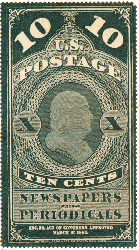
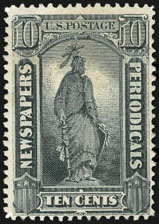

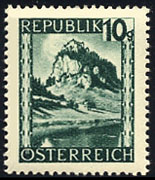 Austria #460—
Austria #460— Austria #522—
Austria #522—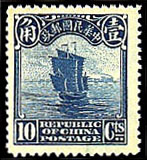 China #230—
China #230—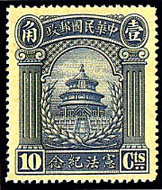 China #273—
China #273— Germany #739—
Germany #739—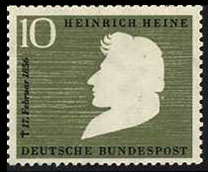 Germany #740—
Germany #740—.jpg) Panama #C106—
Panama #C106—.jpg) Spain #288—
Spain #288—

.gif)
.jpg)